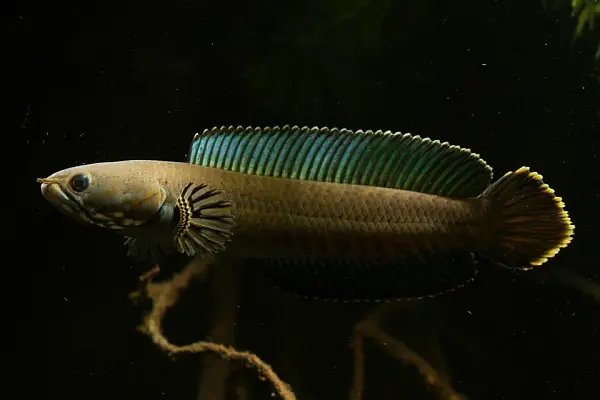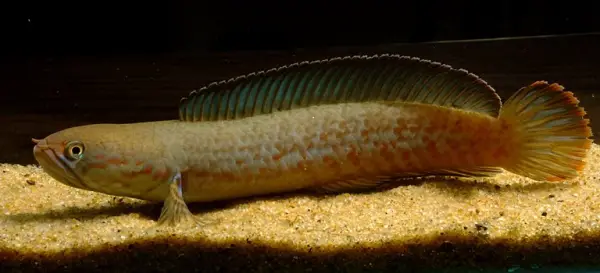New snakehead is well-known in aquarium hobby
The snakehead that has been known to aquarium hobbyists as Channa sp. ‘Assam’, C. sp. ‘Lal Cheng’ or C. sp. ‘blue bleheri’ for a number of years is named C. andrao in the journal ‘Zootaxa’ this week.
The specific name honours Andrew Rao of Malabar Tropicals, Calcutta, “for his support of the ichthyological exploration of the freshwater fish fauna of India”.
C. andrao is currently known only from a single locality, the Lefraguri swamp in Jalpaiguri district, West Bengal state, India, which comprises a forested wetland with shallow, turbid, slightly acidic water and an abundance of submerged vegetation.
It is the 10th Channa species described from, and endemic to, the eastern Himalayan region and the 5th known to lack pelvic fins thus it is easily told apart from all congeners except C. asiatica, C. bleheri, C. burmanica, and C. orientalis.
It can be told apart from C. asiatica and C. burmanica by possessing fewer vertebrae (41–43 vs. 45–57) and further differs from the former by having fewer dorsal- (35–36 vs. 46–49) and anal-fin rays (23–26 vs. 28–32), and fewer lateral line scales (42–43 vs. 55–64).
It’s additionally distinguished from C. asiatica by presence of fewer scales above (3.5 vs 5.5) and below (5.5 vs. 11) the lateral line, fewer preanal scales (21–22 vs. 39), fewer pectoral-fin rays (14–15 vs. 16), fewer principal caudal rays (12–13 vs. 16) and reproductive strategy (mouthbrooder vs. floating-egg guarder).
The new species differs from C. orientalis by having longer dorsal-(64.6–68.8 vs. 58.0–59.6 % of standard length, hereon SL), and anal-fin (bases 40.8–44.5 vs. 36.4–38.8 % SL), more lateral line scales (42–43 vs. 40–41), more vertebrae (41–43 vs. 38–40), more anal-fin rays (23–26 vs. 21–22) and pelvic-fin patterning (presence of 2-3 basal bands vs. five narrow bands).
Channa andrao is most similar to C. bleheri but has a longer dorsal-fin base (64.6–68.8 vs. 59.7–63.7 % SL), absence (vs. presence) of orange-red blotches on the caudal fin in life, pectoral-fin pattern comprising 2 (vs. 5) dark bands and reproductive strategy (mouthbrooder vs. floating-egg guarder).
It is among the smallest members of the genus with a maximum standard length of just over 100 mm.
The Vietnames species C. hoaluensis and C. ninhbinhensis which were both raised by Nguyen (2011) also lack pelvic fins but are considered synonyms of C. asiatica following this new study due to a lack of supporting evidence regarding their distinctness.
For further information refer to the full paper (link to preview only): Britz, R., 2013. Channa andrao, a new species of dwarf snakehead from West Bengal, India (Teleostei: Channidae). Zootaxa 3731(2): 287–294.
Also see: Nguyen, V. H., 2011. Two new species belonging to genus Channa (Channidae, Perciformes) discovered in Ninh Binh Province, Vietnam. Journal of Biology (Vietnam) 33(4).
Matt Ford
Category: New Species, News, Uncategorized | Tags: blue bleheri, Channa, Lal Cheng, Ralf Britz, snakehead, Zootaxa | 2 comments »





June 2nd, 2014 at 12:25 am
soo i’ve been looking for this species for some time now.. anyone got any idea about why im not able to get a hold on this fish
December 12th, 2014 at 1:40 am
It’s possible, depending on your area, that it’s considered an invasive or illegal species. I haven’t seen one for sale in years.
Keep an eye on Aquabid and forums like MonsterFishKeepers for anyone rehoming theirs. It’s unlikely that there will ever be widespread sales of snakehead species, though.